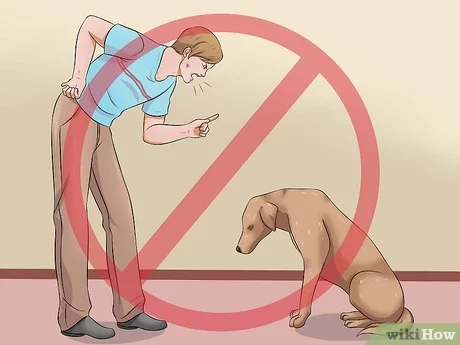Do Dogs Fall In Love
Do Dogs Fall in Love? Exploring Canine Emotions and Relationships
Dogs are known for their loyalty, affection, and playful nature, but do they also experience love? While some people may dismiss the idea of dogs falling in love as anthropomorphism or sentimentalism, emerging research and anecdotal evidence suggest that dogs can form deep emotional bonds with humans and other dogs. In this article, we will delve into the fascinating world of canine emotions and relationships, and try to answer the question: do dogs fall in love?
Understanding Dog Emotions
To answer this question, we first need to understand what emotions are and how they work in dogs. Emotions are subjective experiences that arise from a complex interplay between physiological responses, cognitive appraisals, and social cues. Emotions can be positive (such as joy, excitement, love) or negative (such as fear, anger, sadness), and they can vary in intensity and duration depending on the situation and the individual.
While scientists have long debated whether animals have emotions at all, recent studies have shown that many animals share similar brain structures, hormones, and behaviors with humans when it comes to emotions. Dogs are no exception. According to researchers from the University of Helsinki who conducted a meta-analysis of dog emotion studies published between 2000 and 2016, “the available data indicate that dogs have complex emotional lives” (Kujala et al., 2017).
Some of the most common emotions that dogs express include happiness (wagging tail, jumping up), fear (cowering, trembling), anger (growling, biting), curiosity (sniffing around), playfulness (fetching toys), contentment (lying down), and affection (licking faces). These emotions can be triggered by various stimuli such as food, toys, smells, sounds, sights, touch, or social interactions.
One aspect of dog emotions that is particularly relevant to the question of whether dogs fall in love is attachment.
Attachment in Dogs
Attachment refers to the emotional bond that forms between individuals who interact with each other over time, and who rely on each other for security, comfort, and pleasure. Attachment can be seen as a form of love, albeit not necessarily romantic or sexual. Attachment can develop between humans and animals (such as pets), as well as between animals of the same species (such as littermates or mates).
Attachment is often studied in infants and young children, using a method called the “strange situation” paradigm developed by Mary Ainsworth in the 1970s. In this paradigm, a child is brought into a room with his or her caregiver, and then left alone briefly, followed by the entrance of a stranger, the departure of the caregiver, and then the reunion with the caregiver. The child’s behavior during these stages reveals his or her attachment style, which can be secure (seeking contact with the caregiver upon reunion), avoidant (avoiding contact with the caregiver), or ambivalent (alternating between clinging and rejecting behaviors).
Recently, researchers have adapted this paradigm to test attachment in dogs. For example, one study conducted by Swedish scientists in 2010 used a modified version of the strange situation with 12 adult dogs and their owners. The results showed that “dogs exhibit behavioral patterns suggestive of an attachment bond” with their owners, including seeking proximity and contact, displaying distress when separated, showing joy upon reunion, and being influenced by their owner’s presence when exploring new environments (Rehn et al., 2010).
Another study conducted by Italian researchers in 2013 compared attachment styles between puppies from different breeds. The results showed that “attachment styles consistently vary across breeds”, with some breeds (such as Border Collies) being more likely to show secure attachment than others (such as Beagles) (Prato-Previde et al., 2013).
These and other studies suggest that dogs can form attachment bonds with humans, and that these bonds can vary in strength and style depending on the individual dog and the context. However, attachment alone does not necessarily imply love.
Love in Dogs?
So, do dogs fall in love? The answer depends on how we define love. Love can mean different things to different people, but some common features of love include:
– A strong positive emotion towards someone or something.
– A desire for closeness and intimacy.
– An ability to sacrifice one’s own interests for the sake of another.
– An enduring commitment to maintain the relationship.
If we apply these criteria to dogs, we can see that they may fulfill some of them, but not all. Let’s take a closer look.
1. A strong positive emotion towards someone or something.
Dogs clearly experience strong positive emotions towards their owners and other animals they interact with regularly. These emotions may include happiness, excitement, affection, and even “love” in a broad sense of the term. Dogs express these emotions through various behaviors such as tail wagging, licking, jumping up, cuddling, following around, playing together, and vocalizing (barking or whining). However, it is unclear whether dogs experience emotions in the same way as humans do, or whether they have a more limited range or depth of emotions.
2. A desire for closeness and intimacy.
Dogs often seek physical contact with their owners and other animals they are attached to. This physical contact serves a social function by providing comfort, reassurance, and pleasure. Dogs also use eye contact as a way to communicate with humans and other dogs. Eye contact can signal trust, attention, affection, dominance, submission, or aggression depending on the context. However, it is unclear whether dogs perceive closeness and intimacy in the same way as humans do, or whether they have a more instinctual or conditioned response to it.
3. An ability to sacrifice one’s own interests for the sake of another.
Dogs may exhibit altruistic behaviors towards their owners and other animals they are attached to. For example, dogs have been known to risk their lives to save their owners from danger (such as fires, floods, or attackers), to share food with other dogs in their pack, or to comfort sick or distressed animals. These behaviors suggest that dogs may have some sense of empathy and compassion towards others, but it is unclear whether dogs do this out of love or out of a more basic survival instinct or social norm.
4. An enduring commitment to maintain the relationship.
Dogs can form long-lasting relationships with humans and other animals they are attached to. These relationships can span years or even decades, and involve mutual dependence, trust, affection, and care. However, it is unclear whether dogs have a sense of future-oriented thinking or planning that would allow them to make conscious decisions about maintaining a relationship over time. Dogs may simply respond to their immediate needs and circumstances without anticipating the future consequences.
Overall, it seems that while dogs can exhibit many behaviors and emotions that we associate with love, such as attachment, affection, loyalty, sacrifice, and commitment, it is difficult to say whether dogs actually experience love in the same way as humans do. Dogs may have a more limited or instinctual range of emotions and motives than humans do when it comes to romantic love or long-term commitment. However, this does not mean that dogs cannot form deep emotional bonds with humans and other dogs that enrich their lives and ours.
Conclusion
In conclusion, the question “do dogs fall in love?” is not an easy one to answer definitively. While there is evidence that dogs can form attachment bonds with humans and other animals that resemble love in some ways, it is unclear whether dogs actually experience love as a conscious, complex emotion and motivation. Nevertheless, dogs are capable of expressing and eliciting a wide range of emotions and behaviors that enhance our lives and theirs. By understanding and respecting their emotions and relationships, we can deepen our bonds with these amazing animals and appreciate them even more.



